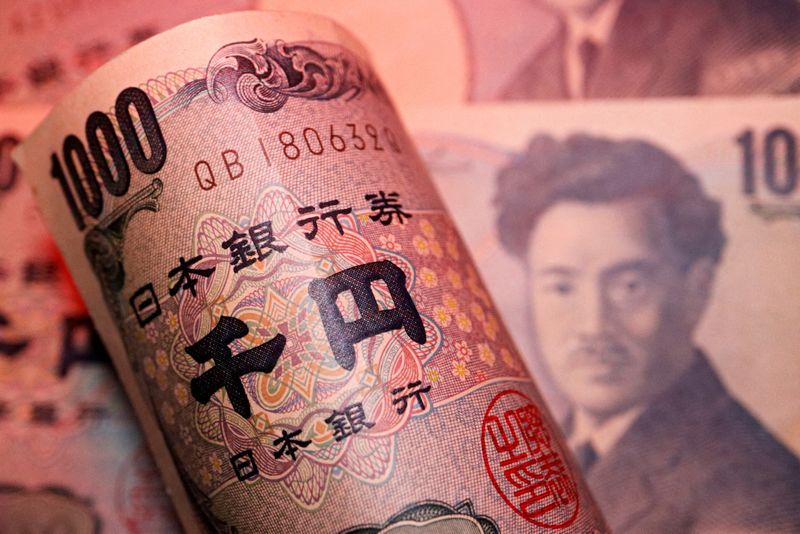By Tetsushi Kajimoto
TOKYO (Reuters) -Japanese authorities spent 9.79 trillion yen ($62.23 billion)intervening in the foreign exchange market to support the yen over the past month, in moves that kept the currency from testing new lows but are unlikely to reverse longer-term declines.
The Ministry of Finance data released on Friday confirmed the suspicions of traders and analysts that Tokyo entered the market in two rounds of massive dollar-selling intervention shortly after the yen hit a 34-year low of 160.245 per dollar on April 29, and again in the early hours of May 2 in Tokyo.
"This was larger than expected, underscoring Japan's resolve to ease the pain of imported inflation," said Daisaku Ueno, chief FX strategist at Mitsubishi UFJ (NYSE:MUFG) Morgan Stanley Securities.
"Authorities will likely continue to spend big on intervention."
Despite those billions of dollars of foreign reserves spent, the effect has not been sustained, and market attention has shifted to whether and how soon Japan might step into the market again as the yen languishes near the 160 threshold that is widely seen as authorities' line in the sand for intervention. The yen traded at 157.235 per dollar as of 1020 GMT on Friday.
Finance Minister Shunichi Suzuki issued a fresh intervention warning earlier in the day, reiterating that officials are watching currency markets closely and stand ready to take all necessary measures.
Authorities have refrained from commenting on whether they forayed into the market, but have consistently warned they stand ready to act at any time to counter excessive volatility.
Friday's monthly data set only shows the total amount Tokyo spent on currency intervention during the period. A more detailed daily breakdown of intervention will only be seen in data for the April-June quarter, likely to be released in early August.
Much of the yen's woes is down to the resilience of the U.S. economy and the resulting delay in Federal Reserve rate cuts, while the Bank of Japan (BOJ) is expected to take its time in raising interest rates this year.
Last week, Japan renewed its push to counter excessive yen falls during a weekend gathering of Group of Seven (G7) financial leaders, which was helped by the group again warning against excess currency volatility.
"Given that there was no opposition from other countries, Japan will likely continue efforts to curb excessive yen falls through intervention," said Yoshimasa Maruyama, chief market economist at SMBC Nikko Securities.
However, U.S. Treasury Secretary Janet Yellen said last week intervention should be restricted to "exceptional" cases, underscoring her "belief" in the market-set exchange rates.
Top currency diplomat Masato Kanda said last week that authorities are prepared to take action at "any time" to counter excessive yen moves.
Having engaged in the past yen-selling intervention more than two decades ago, Kanda, now the vice finance minister for international affairs, led yen-buying operations in September and October of 2022, spending about 9.2 trillion yen over three days.
Although Japan has had only limited success in arresting sharp yen swings, there's a good chance it could act again even if the currency does not break beyond the 160-to-the-dollar mark, said Masafumi Yamamoto, chief FX strategist at Mizuho Securities.

"Japan must have won backing from G7 including the U.S. to intervene in the currency market again," he said. "If the yen makes sharp single-day moves from the current level to say, 158 yen or beyond, it might take action again."
($1 = 157.3200 yen)